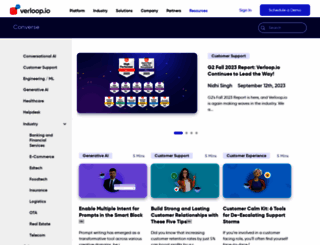Blog | Articles on Customer Support and Conversational AI - Verloop.io
Page Load Speed
2.3 sec in total
First Response
90 ms
Resources Loaded
1.7 sec
Page Rendered
552 ms

About Website
Click here to check amazing Blog Verloop content for India. Otherwise, check out these important facts you probably never knew about blog.verloop.io
The Verloop.io team shares insights, musings, tips and tricks and product launches around conversational AI and customer support automation.
Visit blog.verloop.ioKey Findings
We analyzed Blog.verloop.io page load time and found that the first response time was 90 ms and then it took 2.3 sec to load all DOM resources and completely render a web page. This is quite a good result, as only 45% of websites can load faster.